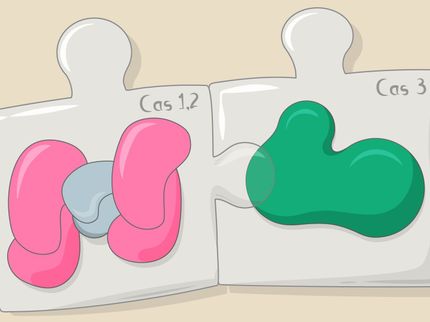Time travel through genomics
Reconstruction of a 1,300-year-old phage genome shows similarities to a modern virus that infects intestinal bacteria
Advertisement
viruses adapt quickly to new conditions, which is accompanied by a change in their genome. This also applies to a special group of viruses, the bacteriophages. A research team from Poland, the Netherlands and Germany has now successfully reconstructed numerous old phage genomes. These include a genome that is around 1,300 years old and is very similar to the modern Mushuvirus mushu, which infects intestinal bacteria. This contradicts the widespread assumption of a ubiquitous high mutation rate in viruses and thus expands our understanding of their evolution. The researchers have published their findings in the journal “Nature Communications”.
A previously largely unexplored source of microbial diversity are samples from the human gut and faeces that are centuries to millennia old. Using modern scientific methods such as metagenome sequencing, researchers have already been able to reconstruct the DNA of ancient bacteria. These provide information about the nature of the human gut microbiome from the pre-industrial age.
"We wanted to analyse this existing database for remnants of bacteriophages, viruses that infect bacteria," says Piotr Rozwalak, first author of a new study and doctoral student in the group led by "Balance of the Microverse" professor Bas Dutilh at Friedrich Schiller University Jena, Germany. Bacteriophages are interesting because they influence how harmful a bacterium is, for example. As the researchers report in the study, they have succeeded in identifying and reconstructing a large number of ancient phage genomes.
"Bacteriophages are in constant competition with their hosts, the bacteria, to upgrade themselves. This is why they are constantly changing. This makes it all the more unusual that we have come across an ancient phage genome that is almost identical to that of the current Mushuvirus mushu," says Rozwalak. The ancient phage genome comes from a 1,300-year-old stool sample from Mexico, while the current day Mushuvirus mushu phage genome originates from wastewater samples from France. According to the researchers, the DNA sequence in the two samples match 97.7%. "The fact that the bacteriophage is incorporated into the bacterial genome probably enables a long and stable relationship between them, without the traditional arms race that is typical of viruses and their hosts," says Rozwalak. This may explain why there does not seem to be significant evolution in this particular phage in the last 1,300 years.
"This discovery not only proves that it is possible to reconstruct ancient phage genomes. It also shows that a lot of knowledge about the diversity and evolution of viruses is still lying dormant," says Rozwalak. Cataloguing this viral diversity and thus making it accessible to further research is one of the researchers' next goals.



























































